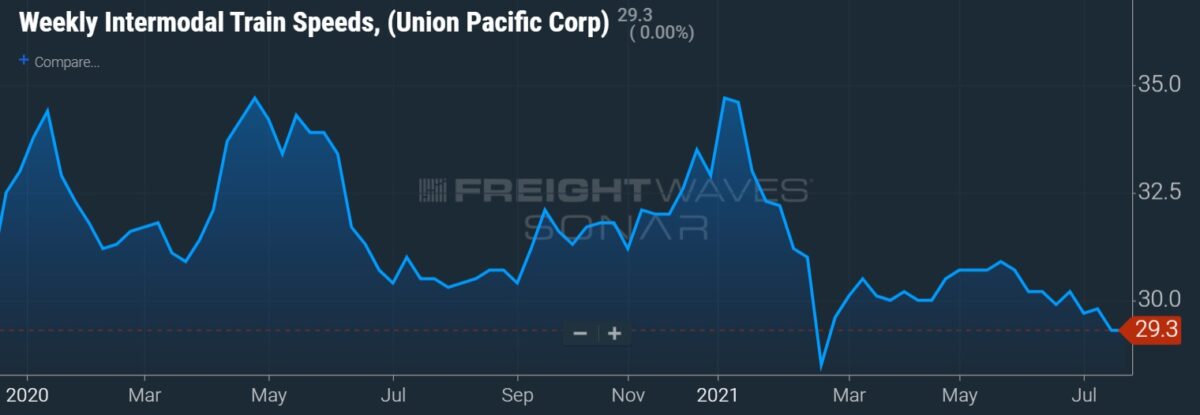The National Retail Federation is calling for the start of peak season to kick off with a bang. The group sees imports to the nation’s largest retail container ports increasing 12.6% year-over-year in August to 2.37 million twenty-foot equivalent units, ahead of the recent monthly record established in May of 2.33 million.
“August is the beginning of the ‘peak season,’ when retailers stock up on holiday merchandise each year,” the report stated. “Many retailers are moving up their shipments this year as part of their risk-mitigation strategies to ensure that sufficient inventory will be available during the holidays.”
What happens when the boxes get here remains an issue.
The freight will land on U.S. shores as freight markets enter a second year of unprecedented disruption brought on by record consumer demand and a transportation network suffering from a lack of labor and equipment to fill the need.
“The strain of the continuing economic expansion is putting considerable pressure on the logistics supply chain,” said Ben Hackett, founder of Hackett Associates, which works with the NRF to produce the monthly container forecasts. “We’re seeing a lack of shipping capacity combined with port congestion as vessels line up to discharge goods from both Asia and Europe.”
Numbers from the NRF show first-half 2021 imports increased 35.6% year-over-year to 12.8 million TEUs. The first half of 2020 included the peak of demand destruction that was caused by the pandemic, which closed many sectors of the economy for months.

The NRF is calling for a new record in 2021 with full-year imports up 17.5% year-over-year to 25.9 million TEUs. Even with the COVID overhang last year, container imports came in at a record pace, 1.9% ahead of 2019 at 22 million TEUs.
July numbers haven’t been finalized but the expectation is imports increased 15.7% year-over-year to 2.22 million TEUs. September is expected to see a 4.9% year-over-year increase to 2.21 million TEUs. But the tough comps created by last year’s record container landings will be evident during the fourth quarter as imports are expected to decline 3% in October, 1.5% in November and 4.1% in December.
“Delays are stretching to landside as port terminals struggle with space shortages, and labor challenges are affecting ports, railroads and trucking companies alike. This part of the recovery is not a pretty sight,” Hackett added.
Ships waiting longer for berths at ports and delays unloading freight once it’s there are just part of the supply chain headwinds. Once routed inland, container shortages are being exacerbated by slow rail service and labor challenges at shipper facilities, which has resulted in delayed equipment turn times, further pressuring rail service.

“Strong consumer demand has outpaced supply chain operations since late last year and could remain a challenge as the holidays approach,” said Jonathan Gold, NRF VP for supply chain and customs policy.
He’s calling on Congress to get an infrastructure package in place.
“The continuing lack of labor, equipment and capacity has highlighted systemic issues and the need to create a truly 21st century supply chain to ensure resiliency against the next major disruption. Passage of infrastructure legislation currently pending in Congress is a key step in that direction. We need continued focus by the administration to help address these issues as well,” Gold stated.
The recent spate of records set for imported containers have been the highest recorded since the NRF started the dataset in 2002.







